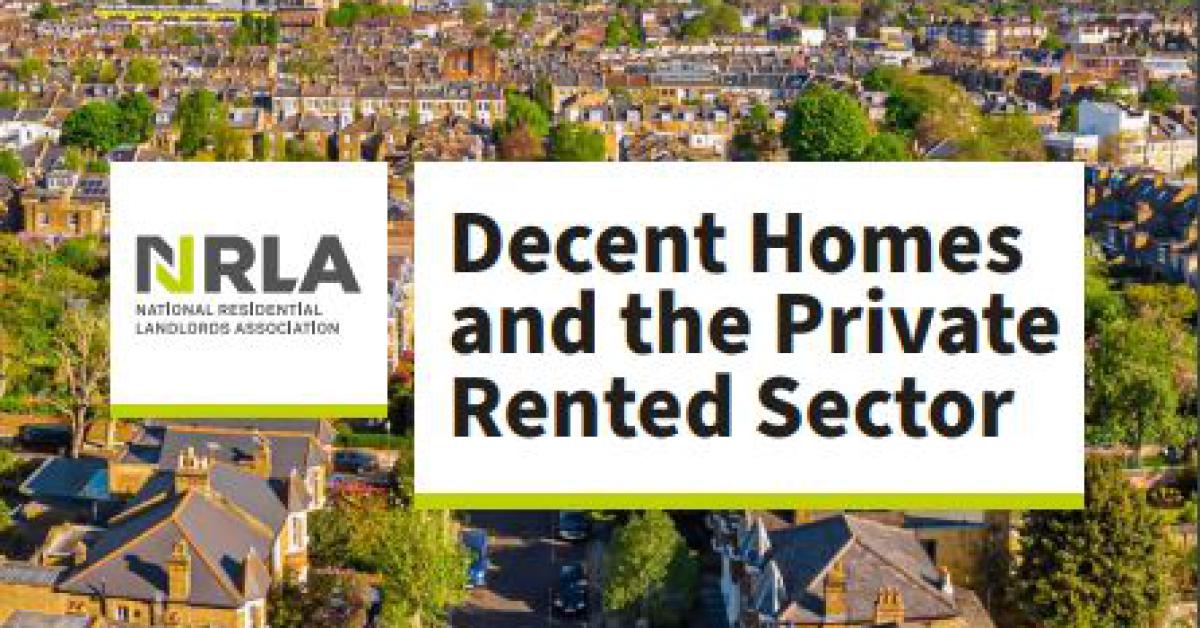

Reclaiming 'decency' for private landlords
Back in February, the Secretary of State for levelling up, communities, and housing, Michael Gove, published a new white paper. This wasn’t the much-anticipated white paper on rental reform, but instead an opportunity for Mr Gove to outline exactly how his department would live up to its name and ‘level-up’ communities around the country.
A great deal has been written about the relative strengths and weaknesses of that document. It was after all nearly 350 pages long.
Ultimately, for the NRLA it was not a game-changing command paper, but it did put the cat amongst the pigeons in one very important respect.
Specifically, it proposed introducing a legally binding Decent Homes Standard in the private rented sector (PRS) for the first time.
The Government doubled down on this in the commitment to a Renters Reform Bill in the Queen’s Speech earlier this month.
Recognising this, the NRLA today publish detailed proposals in our paper ‘Decent Homes and the Private Rented Sector’ which is available to download below.
What is the Decent Homes Standard?
Introduced in 2000 by the Blair Government, the Decent Homes Standard aimed to bring all social housing up to a set level by 2010. It has never applied to private stock but has served as a stick with which to beat private landlords during discussions on quality.
The Standard has four key criteria. Properties must:
- meet the statutory minimum standard for housing (the Housing Health and Safety Rating System or ‘HHSRS’)
- be in a reasonable state of repair
- have reasonably modern facilities and services; and
- provide a reasonable degree of thermal comfort.
Of course, the devil is in the detail, but at a headline level it’s difficult to argue with these. And most properties meeting all existing standards for the PRS will also meet the Decent Homes Standard.
Nothing to worry about then?
Not quite.
Point one poses no real issue. No PRS home should have category one hazards irrespective of any new standard. Ditto point two, the Landlord and Tenant Act 1985 and Homes (Fitness for Human Habitation) Act 2018 provide a baseline for keeping property in good repair.
In terms of thermal comfort, the PRS has much stricter energy efficiency regulations than the social sector and is awaiting news about how much further these will go in future – so twenty-year-old standards are of no real concern.
It is criterion three that could be challenging. Not because any home should be let with unsatisfactory facilities, but because the private sector is not as (relatively) homogenous as the social sector.
One of the things that sets the social apart from the private rented sector is its planned nature. By and large it is made up of at-scale developments of homes, all adhering to similar designs.
Consider the contrast with the majority of the private rented sector. For the most part, our sector consists of many small portfolios built-up piecemeal by individual landlords. Even larger portfolios may well contain a range of freehold, leasehold, flats, and houses, built by different developers over a century or more. It is for this reason that arbitrary rules about layout and the age of facilities are a cause for concern.
Add in houses in multiple occupation (HMOs) and house conversions – rarely seen in the social sector – and the complexity of the issue is evident.
This aside, I agree with the Secretary of State. It should not matter in which sector someone lives. They should be able to expect a decent home, and crucially it should be easy to determine that it meets minimum standards – as the overwhelming majority of PRS properties do.
So, what is the answer?
The existing Decent Homes Standard was written two decades ago for a different sector, facing different challenges, with a lengthy implementation plan.
In order to meet today’s issues head on we need a revised standard, designed for all rented homes, and an appropriate timetable.
The NRLA’s proposals take the best from existing regulations and make it easier for landlords and tenants to apply them.
Our proposals have three pillars:
- All rental properties must meet the statutory minimum standard for housing and in so doing must be free of category one hazards
- All rental properties must be in a decent state of repair
- All rental properties must meet the statutory minimum for energy efficiency.
These new core criteria match, or improve upon, the existing Decent Homes Standard whilst incorporating energy efficiency and removing the arbitrary elements not appropriate for the PRS.
It should be easy to demonstrate compliance via a ‘property passport’, encompassing evidence of fitness, a new approach to illustrating energy performance, and an assessment of decency. This would offer a simple and low-cost way to for landlords to fulfil existing compliance requirements ahead of new tenancies and make it easier for responsible landlords to distinguish themselves from the rogues who undercut us and sustain the poor reputation our sector endures.
As we continue our campaign on this, we’d welcome your feedback via our website.
Decent Homes and The Private Rented Sector

